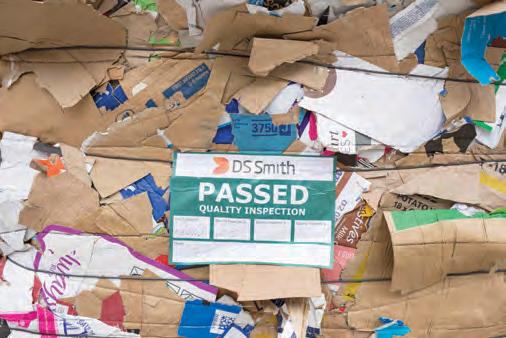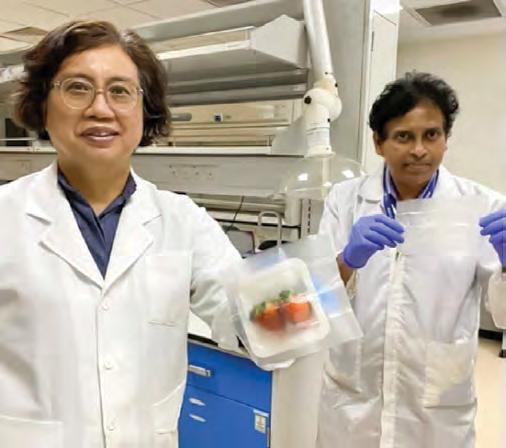
2 minute read
Antimicrobial Food Packaging
to work even more closely to make sure they are optimising their recycling processes – ultimately improving recycling through reducing contamination.”
As more material is fed through the process and more data is analysed, the AI model is continuously refined, improving the accuracy and quality of the inspection.
Janet White, Industrial Products Leader, IBM Consulting UK & Ireland, says, “IBM's collaboration with DS Smith represents the best of IBM's capabilities to help organisations pursue their sustainability goals through digital modernisation. Using the power of the hybrid cloud and Artificial Intelligence technologies to transform DS Smith's recycling operation; this solution will significantly improve the quality of recycling output while reducing waste.” n
Image source: DS Smith
Team of Scientists Develop Biodegradable and Antimicrobial Food Packaging
The food packaging material releases the necessary amounts of antimicrobial compounds in response to the appearance of additional humidity or bacteria, which ensure that the packaging can withstand several exposures and persevere for months.
team of scientists from Nanyang Technological University A(NTU), Singapore, and Harvard T.H. Chan School of Public Health, Harvard University, USA, have developed a 'smart' food packaging material that is biodegradable and antimicrobial. The smart food packaging material is water-proof and it also extends the shelf-life of fresh fruit by two to three days. The packaging material is developed from a corn protein called zein, along with starch, and other naturally- der ived biopolymers, infused with natural antimicrobial compounds such as oil from thyme, and citric acid.
While experimenting, the scientists discerned that in the presence of an increase in humidity or enzymes from harmful bacteria, the fibers in the packaging release the natural antimicrobial compounds wipes out common bacteria that contaminate food as well as fungi.
The packaging has been so designed to release the necessary miniscule amounts of antimicrobial compounds only as a response to the appearance of additional humidity or bacteria. This ability makes certain that the food packaging can withstand several exposures of humidity or bacteria, and thus, it can persevere for months. Since the antimicrobial compounds fight against any bacteria that germinate on the surface of the packaging and on the food product, the scientists claim that the material has the potential to be used for a range of food products like ready-to-eat foods, raw meat, fruits, and vegetables.
During the experiments and research on the packaging material, it was found that strawberries that were wrapped in the packaging remained fresh for seven days as against the strawberries contained in fruit plastic boxes, which stayed fresh for four days.
Speaking on the intent behind developing this smart packaging, Dr. Philip Demokritou, Adjunct Professor of Environmental Health at Harvard T.H. Chan School of Public Health said, “Food safety and waste have become a major societal challenge of

Scientists from NTU and Harvard Chan School developed the new antimicrobial food packaging material.



